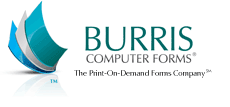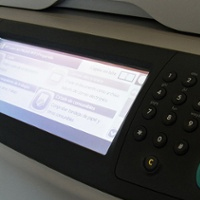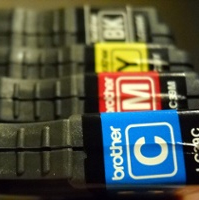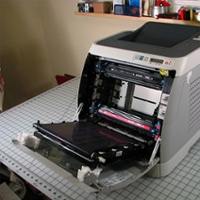How To Use an Inkjet Printer to Print Your Own Forms & How They Work
by Chelsea Camper | Last Updated July 19, 2019In order to successfully print your own forms you need to know a little bit about the tools you’re using. We’re going to take a little dive into finding out how inkjet printers print, what they print well, and what they don’t print so well.
As you might have guessed (or already know), inkjet printers use tiny droplets of ink to create your final print. But do you know if your printer uses the Thermal Bubble or Piezoelectric inkjet technology?
In this post we’ll answer these questions:
- What makes an inkjet printer an inkjet printer
- How inkjet printers work
- What kinds of print jobs should I run on my inkjet printer
What Makes an Inkjet Printer an  Inkjet Printer?
Inkjet Printer?
As the name suggests, inkjet printers are printers that spray ink onto a sheet of paper. This may seem like a very simple process, especially when comparing it to the laser printer. However, the technology behind how the printers spray the ink onto paper isn’t quite so simple (we’ll look at that in the next section).
Here are some other points that separate inkjet printers from laser printers:
- Don’t get hot when printing
- Use ink to print
- Can print high quality color photos
Now let’s get into the fun stuff about how they work and what you can print with them!
How Inkjet Printers Work
Once information has been sent to the printer it begins to pull the paper in from the designated tray. When the paper has been moved to the starting position, the printer head starts rapidly moving back and forth across the paper, pausing ever so slightly to spray the paper with ink where needed.
After each pass across the paper, the printer moves the paper a little so that the print head can reach the next blank section of paper. When the printer is finished with the piece of paper it spits it into the out tray. Most inks these days dry quickly enough that you can pick the paper up as soon as it’s done printing without worrying about smudging the print.
Sounds easy enough, right? The complicated part is actually within those little ink cartridges. We won’t go into detail, but here’s a brief overview of the two main ink technologies found in inkjet printers.
Piezoelectric
The technology of using piezo crystals in ink cartridges has been patented by Epson. What this means is that unless you’re using an Epson printer and ink, you’re probably not using this kind of ink technology.
Piezoelectric ink cartridges work by transmitting a small electrical charge to the crystal located in the back of the ink reservoir. When the crystal vibrates inward, due to the electrical charge, it forces a small droplet of ink to be sprayed out of the nozzle. When the crystal vibrates outward, it pushes more ink out of the reservoir to replace the ink that was just sprayed out.
Thermal Bubble
If you have an HP or Canon inkjet printer, this is probably the technology that’s being used in your ink cartridges. While the thermal bubble technology uses heat, the heat does not reach the paper; it’s contained within the ink cartridges.
Resistors inside the cartridge create heat that vaporizes the ink into a bubble. As the bubble gets larger it forces some ink out of the nozzel. Finally, when the bubble pops, it creates a vacuum that pulls more ink to the head of the cartridge.
What Kinds of Print Jobs Should I Run On My Inkjet Printer?
Ink is typically a little more expensive than toner so printing large print jobs of black text isn’t the best use of your inkjet printer. Here are a few things you should and shouldn’t print on your inkjet printer.
What you probably shouldn’t use your inkjet printer for:
- Long print jobs that don’t require a lot of detail and are mostly black text
- Bar code label sheets (because the ink bleeds slightly when it is sprayed onto the paper it can make bar codes hard to read)
- Glossy paper (you need special inkjet glossy paper to print glossy with inkjet)
Now, here are some things you should definitely be printing on your inkjet printer:
- High detail, full color photographs
- Label sheets that you’re duplexing
- Any type of paper that requires a slow print speed
Do you have any other interesting inkjet tidbits?
Learn more about printing your own with this free Getting Started Guide!
Image: kennymatic
Research: How Stuff Works





